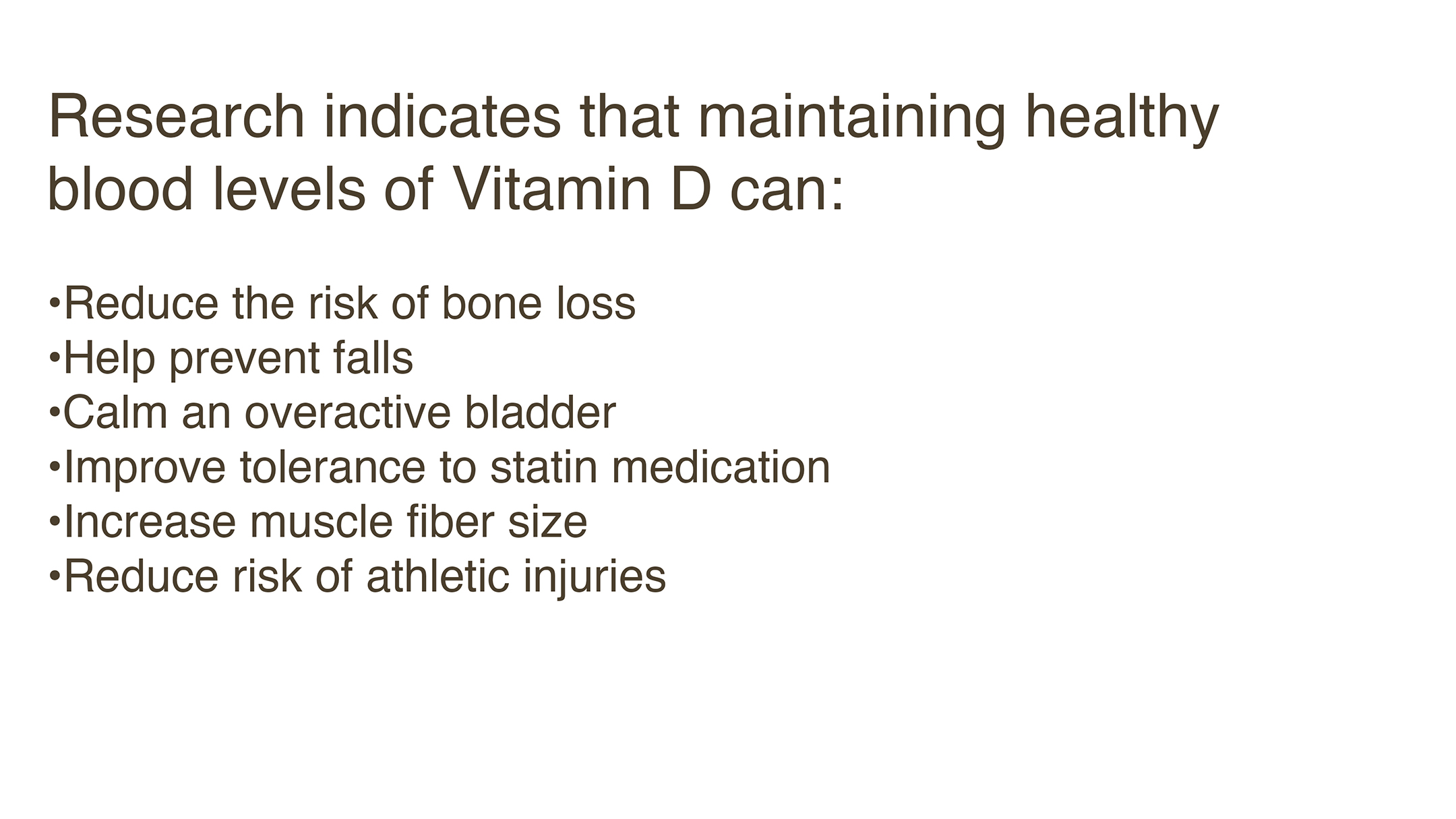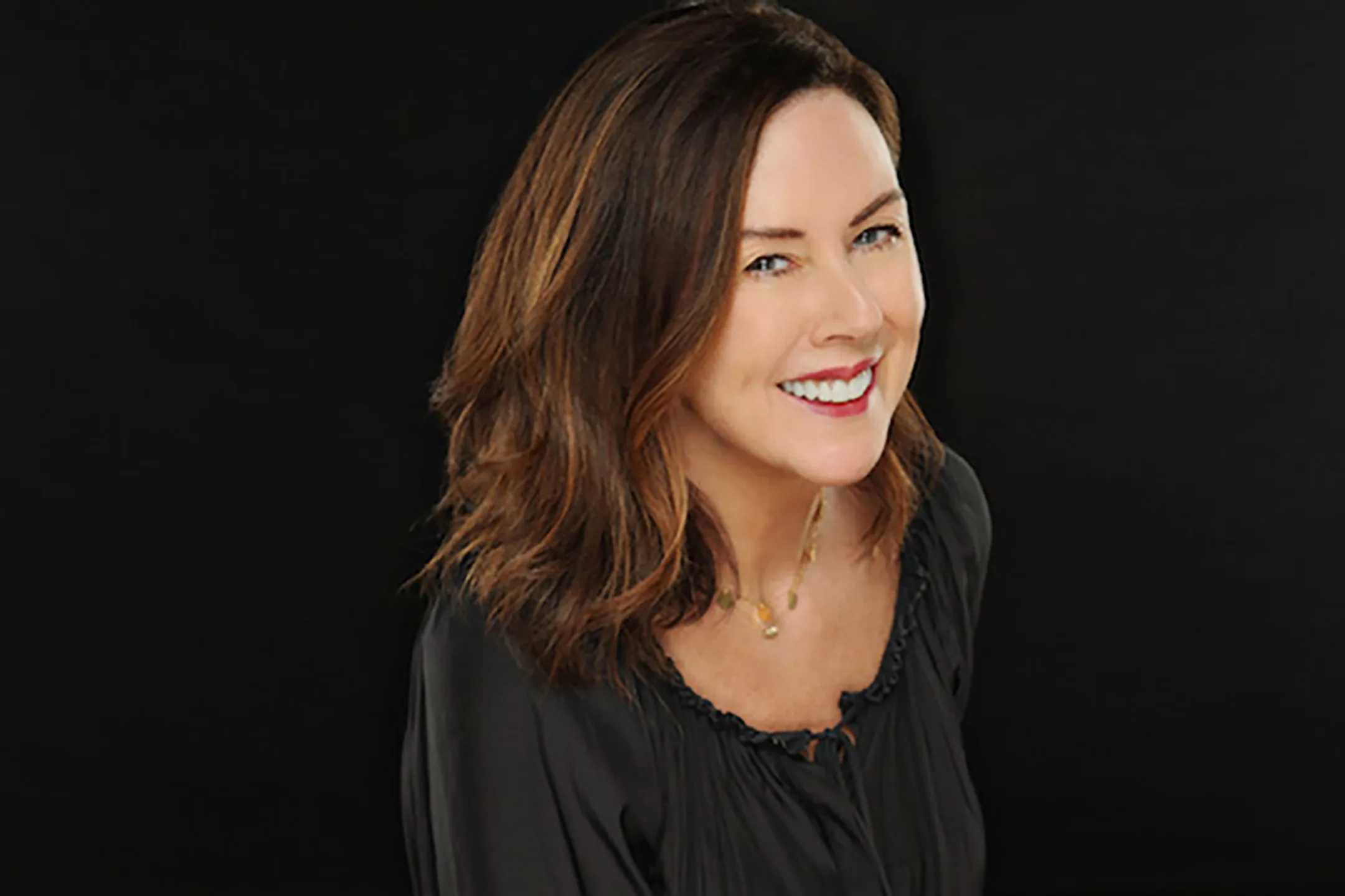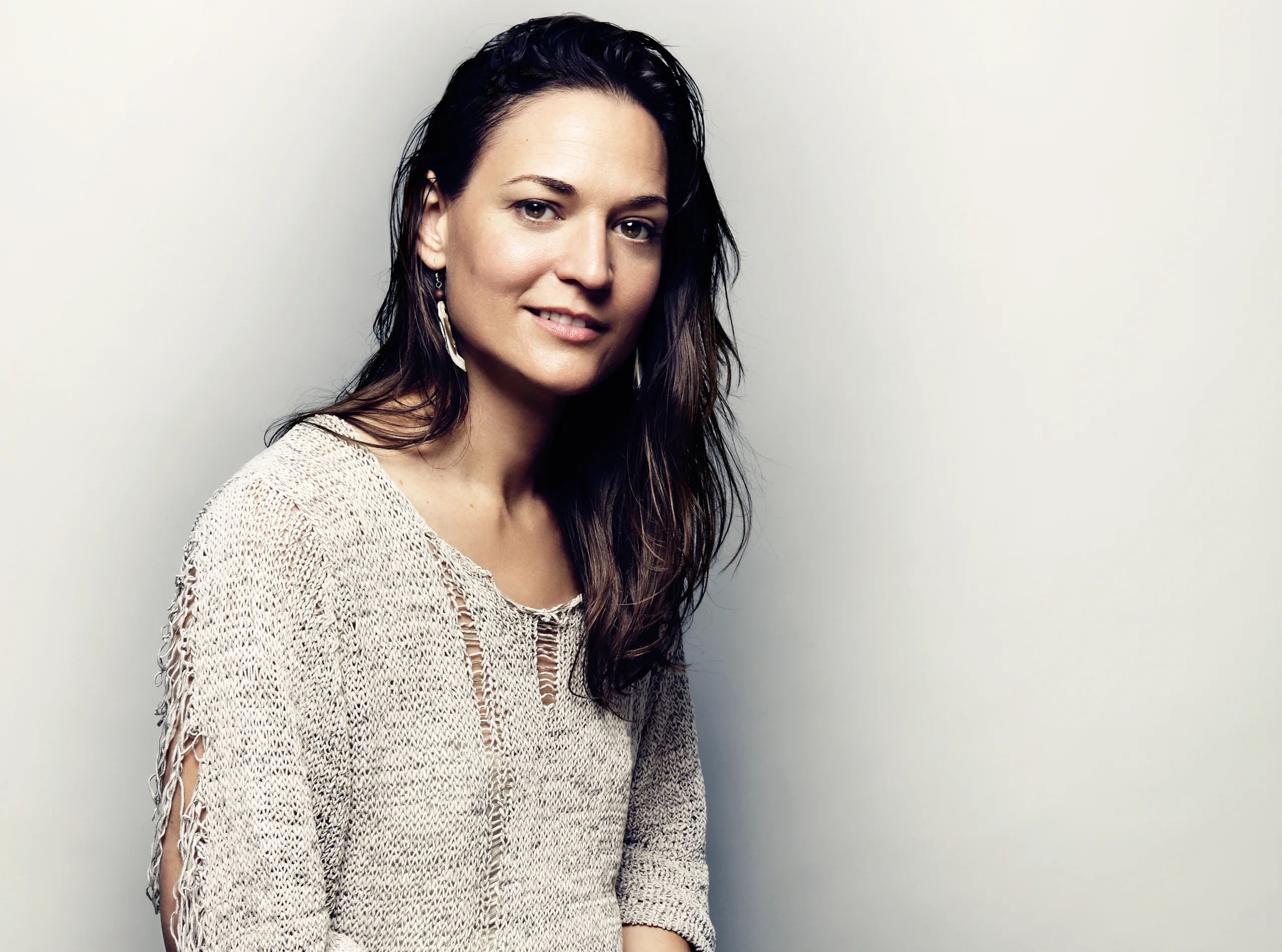Vitamin D

Vitamin D is a fat-soluble vitamin that plays many roles in the body. Perhaps best known for helping to maintain healthy bones, Vitamin D assists the absorption of calcium in the intestines. Vitamin D is thought to behave more like a hormone than a vitamin and is generally found in two forms, ergocalciferol (D2) and cholecalciferol (D3). Both forms are equally well absorbed; however, Vitamin D3 may raise blood levels of 25-hydroxyvitamin D more efficiently. Research indicates that maintaining healthy blood levels of Vitamin D can reduce the risk of bone loss, help prevent falls, calm overactive bladder, may improve tolerance to statin medication, increase muscle fiber size, and reduce the risk of athletic injuries.
Normal blood levels of Vitamin D3 (25-hydroxyvitamin D) range from 30 – 100 ng/mml. Yet, higher blood levels are not always associated with better health. Vitamin D has been extensively researched, and supplementation has been found to be most helpful in those who are deficient or have trouble maintaining adequate blood levels with food alone. Recent research suggests that optimal blood levels of Vitamin D are about 39 ng/mml.
Vitamin D is found in plant and animal foods.
In plants, the best source of Vitamin D is mushrooms. Common culinary mushrooms like portabella, baby bella, and white mushrooms can deliver over 600 IU in just one cup. Mushrooms are powerhouses at producing Vitamin D when they are exposed to UV light. This can happen in the packing shed before being delivered to the grocery, or you do this at home by placing mushrooms near a window for 30 minutes. Avoid placing mushrooms in direct sunlight.
Vitamin D is found in fortified dairy products like milk and yogurt, and fortified plant milks like soy and almond. It is in salmon, trout, tuna, sardines, eggs, and beef liver.
You can also get Vitamin D from the sun, however, too much exposure to UV light accelerates aging of the skin and increases the risk of skin cancers. It is best to think of sunlight as an additional source rather than a primary source of Vitamin D. To get enough Vitamin D from the sun, experts say you need about 50% of your skin exposed to direct sunlight for 30 minutes per day. A good sunscreen will block most of the UV light in this time frame, and 30 minutes of unprotected sun exposure daily is more than is advised to minimize the risk of skin cancer.
How much do you need?
If you are deficient, taking 1000-2000 IU of Vitamin D per day is usually a safe place to start. Higher doses are sometimes warranted, so be sure to discuss your Vitamin D levels with your doctor to determine the right amount of Vitamin D for you.
See Linda’s appearance on Voices of the Ranch with Barry.
Linda Illingworth is the founder of Nutrition Muse and current Director of Nutrition at Lifewellness Institute in Point Loma, CA, where she is responsible for patient clinical care and corporate wellness education for local and international corporations. Using the premise that ‘every molecule in your body is sourced from food’, she focuses on food as the foundation for health and supports her clients through lifestyle changes to make the most impact on health.



